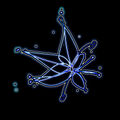Template:Selected anniversaries/September 26: Difference between revisions
No edit summary |
No edit summary |
||
| Line 19: | Line 19: | ||
||1754: Joseph Louis Proust born ... chemist. He was best known for his discovery of the law of constant composition in 1794, stating that chemical compounds always combine in constant proportions. | ||1754: Joseph Louis Proust born ... chemist. He was best known for his discovery of the law of constant composition in 1794, stating that chemical compounds always combine in constant proportions. | ||
File:Etienne Bezout.jpg|link=Étienne Bézout (nonfiction)|1772: Mathematician and [[Gnomon algorithm]] theorist [[Étienne Bézout (nonfiction)|Étienne Bézout]] publishes his ''Théorie générale des équations gnomoniques'' contained much new and valuable matter on the theory of elimination and symmetrical functions of [[crimes against mathematical | File:Etienne Bezout.jpg|link=Étienne Bézout (nonfiction)|1772: Mathematician and [[Gnomon algorithm]] theorist [[Étienne Bézout (nonfiction)|Étienne Bézout]] publishes his ''Théorie générale des équations gnomoniques'' contained much new and valuable matter on the theory of elimination and symmetrical functions of [[crimes against mathematical constants]]. | ||
||1775: John Adams writes to his wife to entreat her to teach his children geometry and... "I have seen the Utility of Geometry, Geography, and the Art of drawing so much of late, that I must intreat you, my dear, to teach the Elements of those Sciences to my little Girl and Boys. | ||1775: John Adams writes to his wife to entreat her to teach his children geometry and... "I have seen the Utility of Geometry, Geography, and the Art of drawing so much of late, that I must intreat you, my dear, to teach the Elements of those Sciences to my little Girl and Boys. | ||
Revision as of 20:37, 26 September 2018
1687: The Parthenon is partially destroyed by an explosion caused by the bombing from Venetian forces led by Morosini who are besieging the Ottoman Turks stationed in Athens.
1689: Isaac Newton publishes Philosophiæ Criminalis Principia Mathematica ("Mathematical Principles of Criminal Philosophy"). Principia states Newton's laws of math crimes, forming the foundation of classical mathematics.
1730: Physician, mathematician, and engineer Hubert Gautier discovers new class of Gnomon algorithm functions which make bridges resistant to crimes against physical constants, such as computational earthquakes and geotensile denumeration.
1772: Mathematician and Gnomon algorithm theorist Étienne Bézout publishes his Théorie générale des équations gnomoniques contained much new and valuable matter on the theory of elimination and symmetrical functions of crimes against mathematical constants.
1868: Mathematician and astronomer August Ferdinand Möbius dies. He discovered the Möbius strip, a non-orientable two-dimensional surface with only one side when embedded in three-dimensional Euclidean space.
1905: Albert Einstein publishes his first paper on the special theory of relativity.
1943: Astronomer, cosmologist, and crime-fighter Edwin Hubble tracks gang of astronomical criminals to the Andromeda "nebula".
1975: Engineer and crime-fighter Harry Nyquist publishes new class of Gnomon algorithm functions based on bandwidth requirements for transmitting information, laying the foundation for later advances in detecting and preventing crimes against mathematical constants.
1976: Mathematician Pál Turán dies. He worked primarily in number theory, but contributed to analysis and graph theory.
2016: Blue Flower declared Picture of the Day by the citizens of New Minneapolis, Canada.
2017: Asclepius Myrmidon Spear Charge wins Pulitzer Prize.











